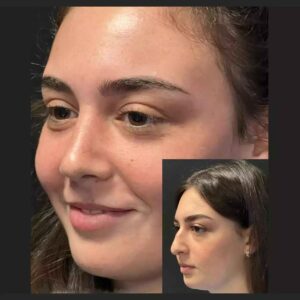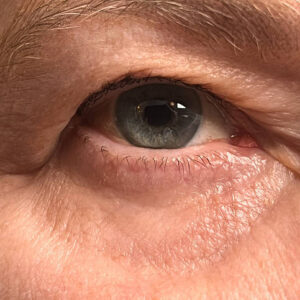Chemical peels are one of the most popular non-surgical skin rejuvenation treatments worldwide. They are widely used to reduce wrinkles, fade pigmentation, improve texture, and enhance skin radiance. While they offer significant benefits, they also involve the controlled removal of skin layers, which means there is always some risk—especially if the procedure is not tailored to the individual’s skin type or performed by a qualified professional.
For most people, chemical peels cause only temporary side effects like redness and flaking, which resolve within days to weeks. However, some individuals worry about the possibility of long-term side effects—issues that can persist for months or even years.
If you are considering a Chemical Peel in Islamabad for concerns like acne scars, uneven tone, or sun damage, it’s essential to understand both the benefits and the potential risks that could affect your skin in the long run.
Understanding Chemical Peels
A chemical peel is a dermatological procedure in which a chemical solution—containing acids such as glycolic acid, lactic acid, salicylic acid, trichloroacetic acid (TCA), or phenol—is applied to the skin to exfoliate and remove its outer layers. This controlled injury prompts the skin to heal by producing new, smoother, and more evenly pigmented tissue.
Chemical peels come in different depths:
-
Superficial Peels – Light exfoliation targeting only the epidermis. These are often made with alpha-hydroxy acids (AHAs) like glycolic or lactic acid.
-
Medium Peels – Penetrate into the dermis to treat more significant pigmentation and texture issues. TCA is a common medium peel agent.
-
Deep Peels – Reach the lower dermis for dramatic improvement in severe skin damage. Phenol is typically used for deep peels.
The risk of long-term side effects generally increases with the depth and strength of the peel, making it crucial to choose the right type for your skin.
Common Short-Term vs. Long-Term Effects
Short-Term Effects (Expected and Temporary)
These occur immediately after treatment and typically subside within a week or two:
-
Redness or flushing of the skin
-
Mild swelling
-
Flaking or peeling
-
Tightness or dryness
-
Temporary increase in skin sensitivity
These effects are part of the natural healing process and indicate that the skin is renewing itself.
Long-Term Side Effects (Possible but Less Common)
While uncommon, the following effects can last for months—or in rare cases—be permanent:
-
Pigmentation changes (hyperpigmentation or hypopigmentation)
-
Skin thinning
-
Persistent redness or sensitivity
-
Scarring
-
Broken capillaries
-
Increased sun sensitivity
Detailed Overview of Long-Term Side Effects
1. Post-Inflammatory Hyperpigmentation (PIH)
What it is: Dark patches of skin that develop after inflammation or trauma.
Why it happens: A chemical peel, especially medium or deep peels, can cause inflammation that triggers excess melanin production in some individuals. This is particularly common in medium to darker skin tones (Fitzpatrick skin types IV–VI).
How long it lasts: Weeks to months, but without proper treatment, it may persist.
Prevention & management:
-
Strict sun protection after the peel
-
Use of pigment-suppressing agents like hydroquinone or azelaic acid before and after treatment
-
Professional evaluation to ensure peel strength is appropriate
2. Hypopigmentation
What it is: Loss of skin color in treated areas, leading to lighter patches.
Why it happens: When pigment-producing cells (melanocytes) are damaged or destroyed by an overly aggressive peel, they may no longer produce melanin.
How long it lasts: May be permanent if melanocytes are irreversibly damaged.
Prevention & management:
-
Avoid deep peels unless absolutely necessary
-
Choose milder peels for darker skin tones
-
If hypopigmentation occurs, treatments like micropigmentation or camouflage makeup may help
3. Persistent Redness
What it is: Prolonged erythema (redness) lasting beyond the normal healing phase.
Why it happens: Can occur if skin takes longer to recover due to a compromised barrier or deeper tissue injury.
How long it lasts: Several weeks to months, depending on skin healing capacity.
Prevention & management:
-
Use barrier-repair creams post-treatment
-
Avoid repeated peels without full recovery between sessions
-
Anti-inflammatory skincare, like niacinamide or aloe vera, can help
4. Skin Thinning
What it is: Reduced thickness of the epidermis or dermis.
Why it happens: Overuse of chemical peels can strip away protective layers and slow natural regeneration.
How long it lasts: Can take months to reverse; in severe cases, sensitivity may be permanent.
Prevention & management:
-
Limit frequency of treatments based on peel depth
-
Incorporate nourishing skincare between sessions
-
Professional monitoring of treatment schedule
5. Scarring
What it is: Formation of permanent marks or indentations in the skin.
Why it happens: Rare, but may occur if the skin is over-treated, the peel penetrates too deeply, or the healing skin is picked or scratched.
How long it lasts: Permanent without corrective dermatological treatments.
Prevention & management:
-
Avoid picking at peeling skin
-
Follow strict aftercare guidelines
-
Seek prompt treatment for any signs of infection or abnormal healing
6. Increased Sun Sensitivity
What it is: A heightened tendency to burn or develop pigmentation when exposed to UV rays.
Why it happens: The peel removes outer skin layers, reducing natural UV protection.
How long it lasts: Weeks to months; in some cases, sensitivity remains higher than before treatment.
Prevention & management:
-
Apply SPF 30+ daily
-
Wear wide-brimmed hats and avoid peak sunlight hours
-
Continue sun protection indefinitely after deep peels
7. Broken Capillaries
What it is: Visible red or purple lines on the skin caused by dilated blood vessels.
Why it happens: Aggressive treatments or repeated peels can weaken vessel walls.
How long it lasts: Often permanent without targeted treatments like vascular laser therapy.
Prevention & management:
-
Avoid unnecessarily strong peels
-
Treat existing redness promptly to prevent progression
Who Is at Higher Risk of Long-Term Side Effects?
-
Darker skin tones – Higher risk of pigmentation changes
-
Sensitive skin types – More prone to persistent redness or irritation
-
History of keloids – Increased scarring risk
-
Individuals on certain medications – Some acne or anti-aging medications increase skin fragility
-
Those with poor aftercare habits – Neglecting sun protection or using harsh products during recovery
How to Minimize Risk of Long-Term Side Effects
-
Choose the Right Peel for Your Skin
-
Superficial peels are safest for beginners and sensitive or darker skin.
-
Medium or deep peels should be reserved for specific, stubborn concerns.
-
-
Space Out Treatments Properly
-
Superficial peels: 2–4 weeks apart
-
Medium peels: 3–6 months apart
-
Deep peels: Every few years only if necessary
-
-
Prepare the Skin Before Treatment
-
Use gentle exfoliants in the weeks leading up to treatment
-
Avoid retinoids or other strong acids for at least 5–7 days beforehand
-
-
Follow Aftercare Strictly
-
Keep skin hydrated
-
Avoid heat, sweating, or saunas for a few days
-
Never pick at peeling skin
-
-
Commit to Daily Sun Protection
-
SPF is non-negotiable to prevent both short- and long-term pigmentation issues
-
Treating Long-Term Side Effects If They Occur
Even with precautions, side effects can happen. Early intervention improves the likelihood of reversal.
-
For Hyperpigmentation: Topical brighteners (vitamin C, kojic acid), chemical exfoliants, or laser therapy
-
For Hypopigmentation: Microneedling with growth factors, camouflage makeup, or pigment-inducing treatments
-
For Persistent Redness: LED light therapy, soothing skincare, anti-inflammatory creams
-
For Scarring: Microneedling, fractional laser, or dermal fillers
-
For Broken Capillaries: Vascular laser treatments
Why Professional Supervision Is Essential
Chemical peels may seem straightforward, but their application requires precision and experience. Clinics like Dynamic Aesthetic Clinic Islamabad ensure:
-
Correct peel selection based on skin type
-
Controlled application time and technique
-
Personalized aftercare instructions
-
Close monitoring for any adverse reactions
Unsupervised or at-home peels—especially medium or deep ones—carry a much higher risk of lasting skin damage.
Final Thoughts
Chemical peels are a powerful tool for skin transformation, but like any procedure, they come with potential risks. Long-term side effects such as pigmentation changes, scarring, skin thinning, and persistent sensitivity are rare but possible, especially when treatments are too strong, too frequent, or improperly performed.
The safest approach is to choose an experienced practitioner, follow all preparation and aftercare steps, and prioritize ongoing skin protection—particularly sun safety. By doing so, you can enjoy the rejuvenating benefits of chemical peels while keeping your skin healthy for years to come.







